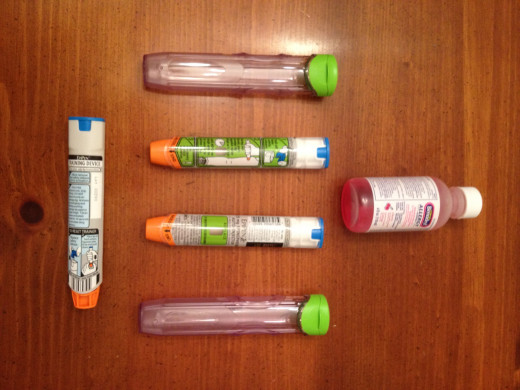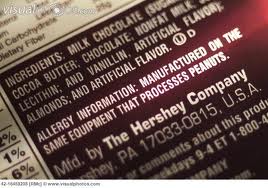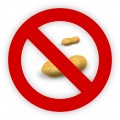- HubPages»
- Food and Cooking»
- Food Safety»
- Food Allergies
Peanut Allergy Treatment: What Causes Peanut Allergies in Children

Raising a child with peanut allergies, can be a very daunting and scary task, especially when the child is too young to understand what a peanut allergy condition is and the precautions they must take to prevent life threatening allergic reactions.
As a parent of a young child with a severe peanut allergy, you have to maintain constant vigilance over not just what they eat, but what you eat and touch, and what others have eaten or touched who will be in contact with your child.
Many people do not realize how severe a peanut allergy is, and that it is a life threatening condition for those individuals who have it this allergy.
How We Discovered our Child's Peanut Allergy
I will never forget the day we found out that my daughter had an allergy to peanuts. It was four days before her 2nd birthday and I gave her a peanut butter and jelly sandwich for lunch. I had been diligent not to feed her eggs, honey, fish, or peanut butter before the age of 2, like the pediatrician had told us. I figured what could four days hurt?
At first, I didn't even realize the severity of what was going on. She came and sat on my lap and started coughing. She was sitting facing away from me so I could not see her face. My husband came into the room and was immediately alarmed. Her lips were blue and she had red welts on her lips and around her mouth.
We called the emergency help line, which is directly connected with our pediatrician's office and was directed to take her to the emergency room ASAP or to call 911. We lived in the city at the time, but they had closed the hospital that was just miles from our home. The nearest one was twenty minutes away and we couldn't make it in time, nor could an ambulance get to us in time. Thankfully, the pediatrician's office was only 1.2 miles from our home and equipped to handle anaphylactic shock in children so they told us to bring her there. They called for the ambulance to meet us there.
It took less than five minutes from the time we made the phone call to getting her into the exam room. But by that time, her lips were completely blue, she was wheezing and coughing, and she had already vomited twice. Her pulse oxygen level was down to 81%. The doctors acted quickly and injected her with an epi-pen and she began to stabilize. Even with the ambulance escort to the hospital, her oxygen level began to drop again and they had to administer more medicine at the hospital to completely counteract the attack.
Coping with the Diagnosis
It is common to feel angry, hurt, or even shame when you get a diagnosis that is, or feels, life altering. You may blame yourself, or think what did I do wrong during the pregnancy. These are completely normal feelings.
As a parent, you want your child to be as healthy as possible. You try do the best you can and follow all the rules. But, the truth is doctors and scientists do not know why food allergies in children are on the rise. Peanut allergies are just as prevalent in children from families who have a history of food allergies, as it is with children from families who have no history.
Regardless of the situation, it is important to realize that your life and your child's life will go on as normal. It doesn't stop them from being who they were meant to be, or doing regular things that all kids do. It just means you and they will have to be a little more food conscience and aware of their surroundings.
It also helps to know that you are not alone. Food allergies in children, especially those of peanut allergies, is far more prevalent than you think. Here are a few allergy statistics in children that you may not be aware of.
Peanut Allergy Statistics
Food Allergy Related Statistics in Chidren
|
|---|
From 2004 to 2006, there was an average of 9,537 hospital discharges per year with a diagnosis related to food allergy among children 0 to 17
|
Peanut allergy is one of the "Big 8" food allergies that account for 90% of all food related allergies
|
Approximately 1% of the American population has a peanut allergy
|
4 out of every 100 children has a food allergy
|
Of food allergic children, peanuts is the most prevalent allergen ahead of milk and shellfish
|
Peanut allergy is the most common cause of food related death
|
Statistics were taken directly from the following sources:
- CDC - Center for Disease Control
- AAFA - Asthma and Allergy Foundation of America
- AAAAI - American Academy of Allergy, Asthma and Immunology
Symptoms of an Allergic Reaction
I think it is important for everyone to understand what an allergic reaction is and how to identify one, in case of emergency.
There are several different ways an allergic reaction to peanuts can manifest. Here is a list of the most common symptoms of anaphylactic shock.
- Difficulty Breathing - child may begin to cough or start wheezing
- Hives - itchy red welts that appear on skin (can be anywhere on the body)
- Swelling of mouth, tongue and throat
- Tingling or itching in the mouth
- Vomiting
- Loss of consciousness
- Dizziness or lightheadedness
If you experience these symptoms or see someone exhibiting these symptoms, it is best to call 911.
What is Anaphylactic Shock or Anaphylaxis
Individuals with a peanut allergy, who come into contact with peanuts, experience anaphylaxsis also known as anaphylactic shock.
- Anaphylaxis is a sudden and severe allergic reaction that affects the entire body
- Anaphylactic shock can only be treated with epinephrine
- Anaphylaxis can result in death if not treated
Types of Peanut Products
- Peanuts (shelled or unshelled)
- Peanut Butter
- Peanut Oil
- Peanut Flour
- Peanut Dust (most commonly from factories who make both products with and without peanuts)
Allergy Warning Label

How to Manage your child's Peanut Allergy
Managing your child's peanut allergy is not easy. It is not as simple as never buying peanut butter. As a mom raising a child who has a peanut allergy, here are a few tips that I have learned along the way
- READ LABELS, READ LABELS, READ LABLES - peanuts come in all different forms and you need to make sure to look for all of them. Most food companies are very good at listing any peanut like products in bold, capital letters, separate from other foods so they stand out.
- Halloween - YIKES!! Halloween is just around the corner and that means tons of candy. You have to check the candy, and not just ones that contain peanuts. You want to remove candy that also states "May contain peanuts" or "Made in a factory that contains peanuts". Some candy companies use the same factory and machines to make all their candy, so whether it has peanuts in it or not, it could contain peanut fragments. I try to keep a big stock of licorice, starbursts, and skittles handy for Halloween so, when I remove the peanut hazardous candy, I can replace it with a safe one.
- Eating Out - you don't have to stop eating out all together. You want to be diligent about reading the menus prior to ordering. It is helpful to alert the waiter/waitress of your food allergy so she can tell the cook/chef. Many restauranst will cook food separately for those who have special food allergies. ***Note: Many Thai, Vietnamese, and other Asian cuisines use peanuts or peanut oil in cooking, so you may want to call ahead to see if they can accommodate a peanut allergy.
- Handling Birthday Parties and Other Social Events - this can be a little tricky. When my daughter is invited to birthday parties, I always call the mom and let her know of my child's peanut allergy ahead of time. I don't expect special food to be made for my child, but I want the mom to be aware of her allergy. If I can, I try to stay at the parties so I can be on hand should an allergic reaction occur.
- Keep an emergency kit with you at all times!!! The last and most important rule I live by, is to always have an emergency kit with my daughter at all times. The emergency kit includes at least one epi-pen, the epi-trainer (just in case someone has never used one before), and children's benadryl (it won't stop the reaction but it can buy you a few critical minutes until help arrives)
Cure for Peanut Allergies?
Currently, there is no cure for peanut allergies. The only way to prevent a severe allergic reaction is complete avoidance of any and all peanut products.
However, according to an article published by CBS News, scientist may have found a way to "turn off" anaphylactic reactions to peanuts. In the article, Dr. Paul J. Bryce is quoted as saying, "We think we've found a way to safely and rapidly turn off the allergic response to food allergies." Dr. Bryce is an assistant professor of medicine at Northwestern University, located in Chicago, Illinois.
So for other parents out there whose children suffer from peanut allergies, there is hope and progress that they may find a cure or preventitive.
How to use an Epi-pen
- Easter Basket Ideas and Candy for Children with Pean...
Jude the Dude Children's Peanut Allergy Book http://www.amazon.com/Jude-Dude-Peanut-Allergy-Kid/dp/0981623506/ref=sr_1_1?s=books&ie=UTF8&qid=1302881996&sr=1-1 Hershey's Milk Chocolate Bunnies - ALWAYS DOUBLE CHECK PACKAGING/LABELS Robin's - Art Crafts for kids with Popsicle Sticks - How to ma...
Looking for a simple and fun art project for kids using popsicle sticks? Try Popsicle Stick Bugs! It's an easy, creative and inexpensive popsicle stick art project for kids








